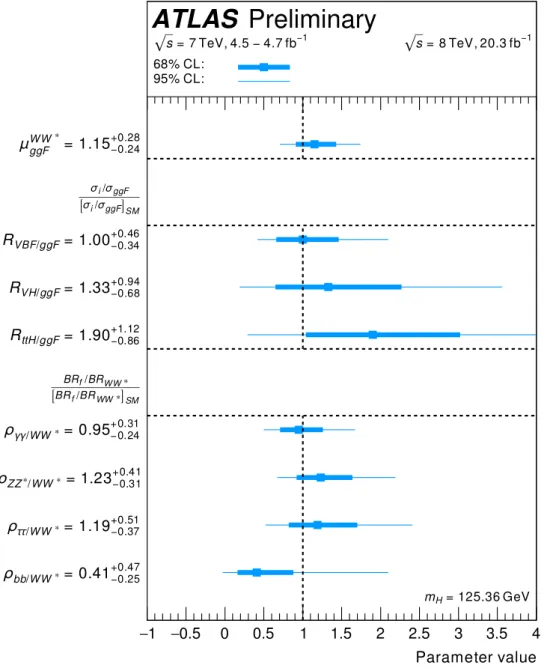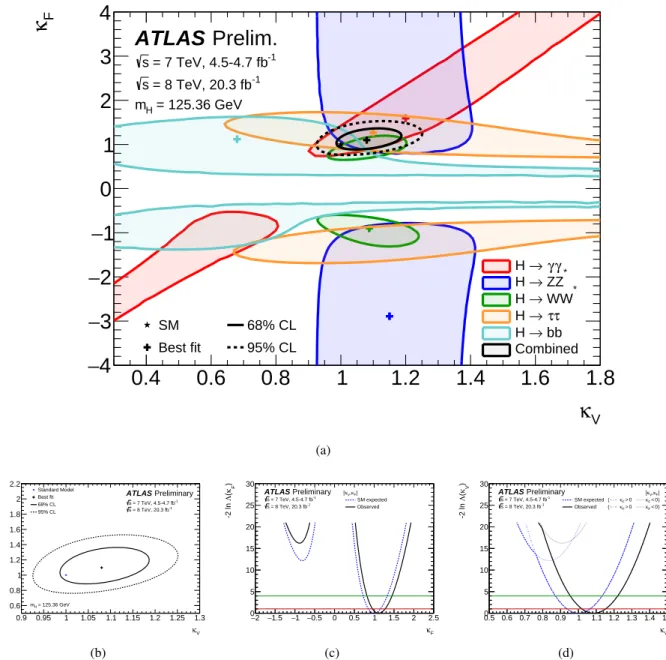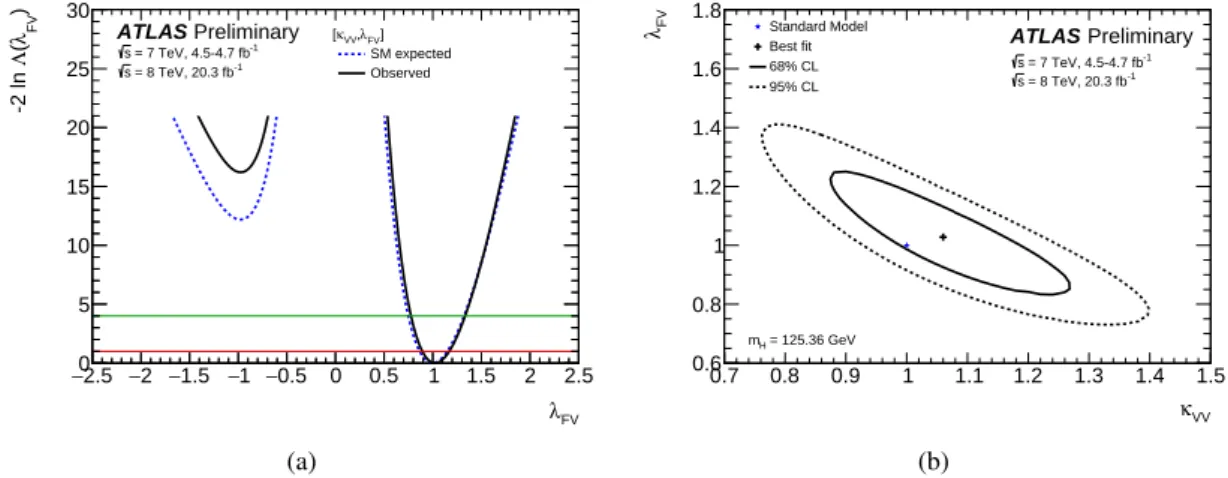Measurements of the Higgs boson production and decay rates and coupling strengths using pp collision data at √
Volltext
Abbildung

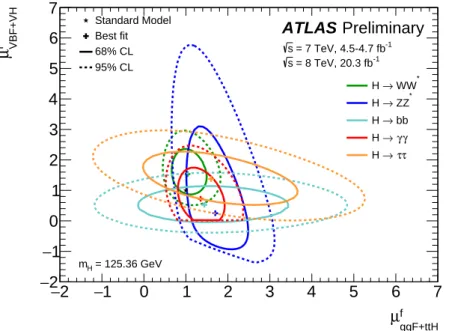
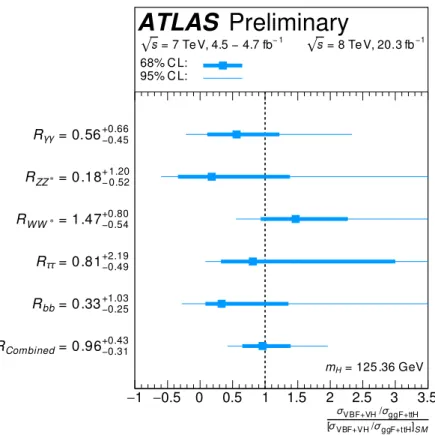

ÄHNLICHE DOKUMENTE
The measurement of the total cross section, extrapolated to the full phase space, based on the fiducial cross section measurements in H → γγ and H → ZZ ∗ → 4` follows a di ff
Here the ratio λ lq between leptons and quarks is probed, while vector boson couplings are taken unified as κ V. The indices l, q stand for all leptons and quarks, respectively.
Measurements of relative branching fraction ratios between the H → γγ , H → ZZ (∗) → 4 ` and H → WW (∗) → `ν`ν channels, as well as combined fits testing the fermion
● Incorporation of spontaneous symmetry breaking in gauge field theory = Higgs mechanism:.. ● Leads to prediction of new particle: →
The results of the four problem subscales of the SDQ (emotional symptoms, conduct problems, hyperactivity-inattention, and peer problems), the combined total difficulties score,
The main reason we state this and the next example is to show that Proposition 5 can be used both in a positive sense (if some CSC-compliant normalizer exists, then the
Regional climate model (HIRHAM) | Land surface model (SWET) | Hydrology model (MIKE
Fourier Transform Ion Cyclotron Resonance Mass


